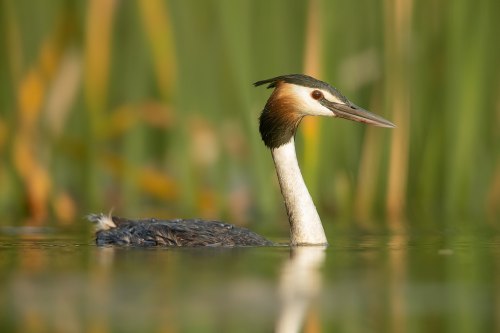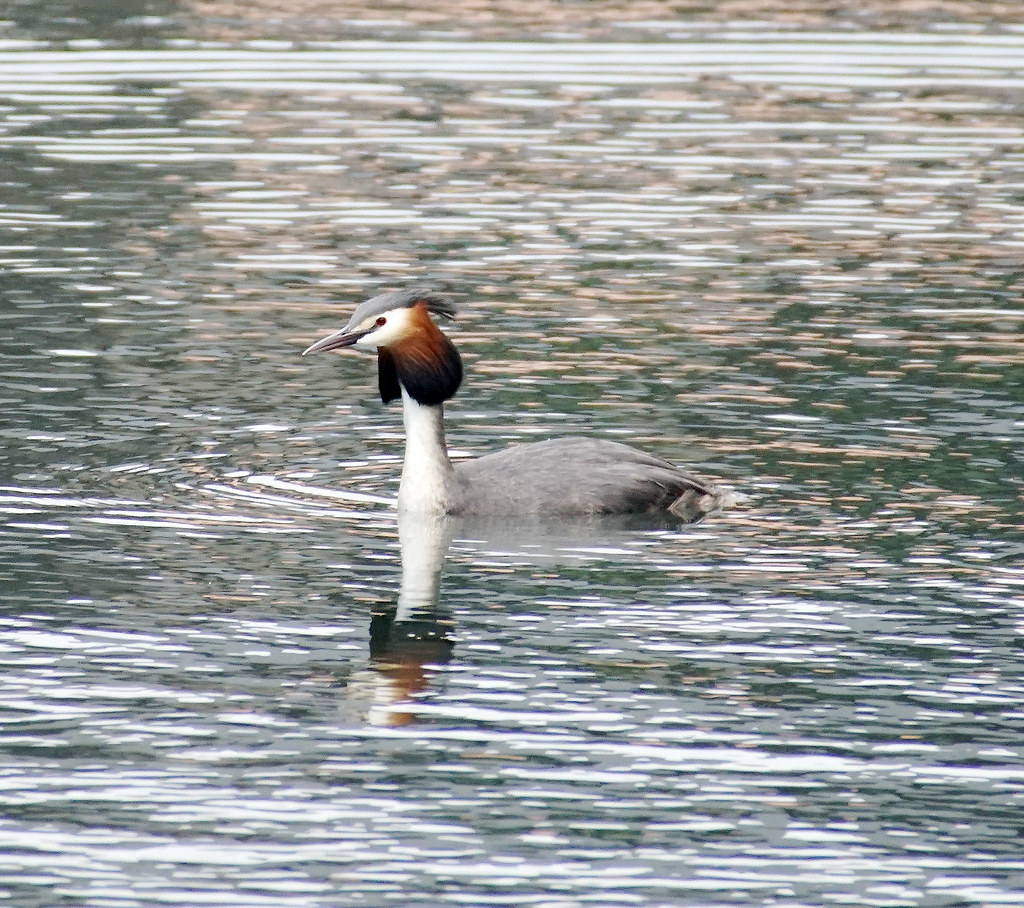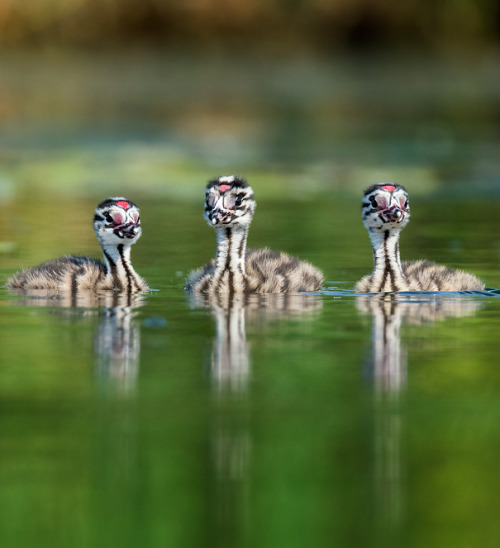#podiceps cristatus
Great crested grebe (Podiceps cristatus)
The great crested grebe is a member of the grebe family of water birds noted for its elaborate mating display. The great crested grebe is the largest member of the grebe family found in the Old World, with some larger species residing in the Americas. They measure 46–51 cm long with a 59–73 cm wingspan and weigh 0.9 to 1.5 kg.It is an excellent swimmer and diver, and pursues its fish prey underwater. The adults are unmistakable in summer with head and neck decorations. The young are distinctive because their heads are striped black and white. The great crested grebe has an elaborate mating display. Like all grebes, it nests on the water’s edge, since its legs are set relatively far back and it is thus unable to walk very well. In a clutch of two or more hatchlings, male and female grebes will each identify their ‘favourites’, which they alone will care for and teach. Unusually, young grebes are capable of swimming and diving almost at hatching. The adults teach these skills to their young by carrying them on their back and diving, leaving the chicks to float on the surface; they then re-emerge a few feet away so that the chicks may swim back onto them. The great crested grebe feeds mainly on fish, but also small crustaceans, insects small frogs and newts.
photo credits: JJ Harrison,Bengt Nyman,Yerpo,Ken Billington
Post link
Great crested grebes are born with stripes and facial markings, presumably to help with camouflaging and possibly parental recognition.
Image credit: Roberto Melotti
Post link







